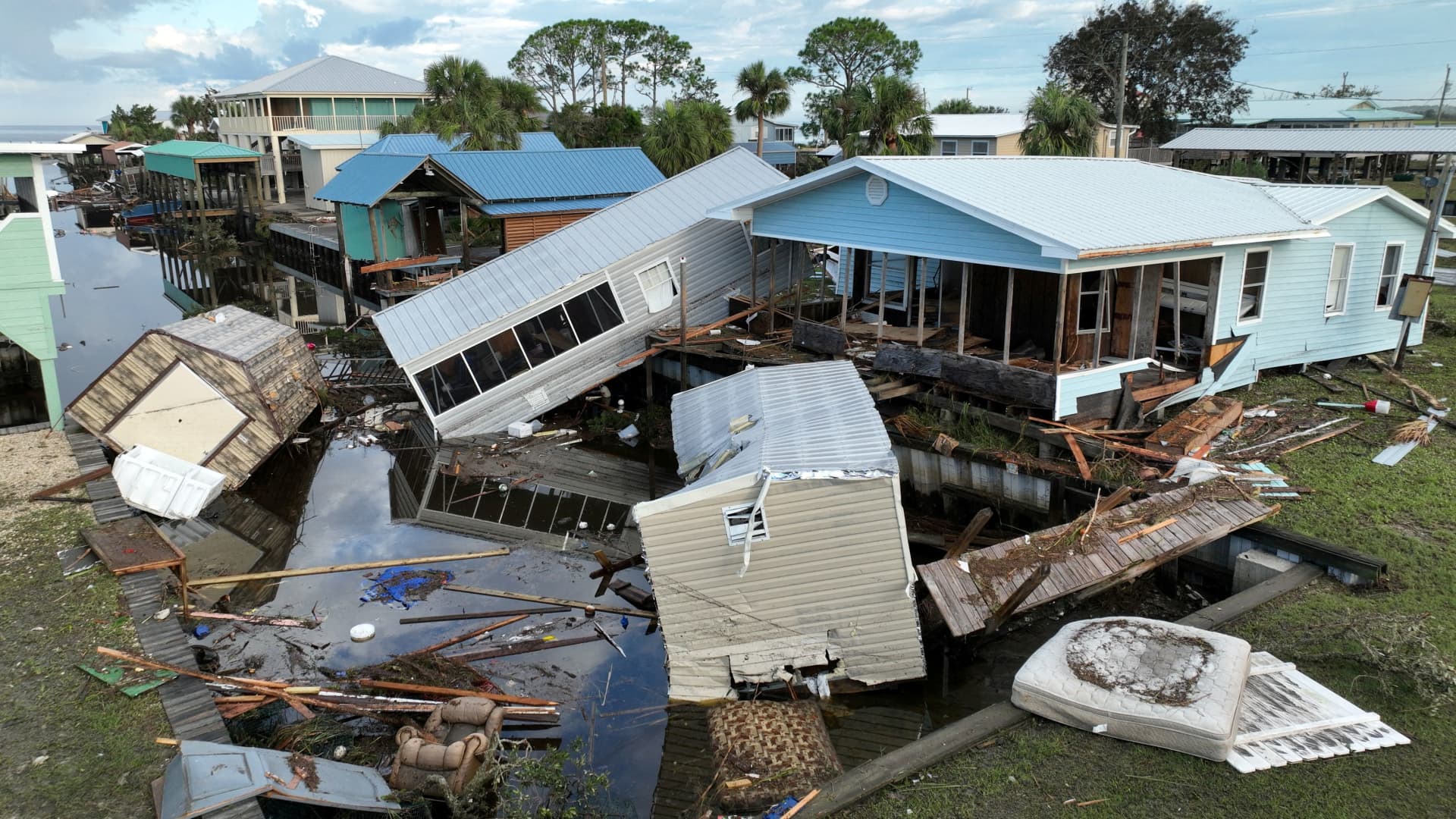View of a damaged property after the arrival of Hurricane Idalia in Horseshoe Beach, Florida, August 31, 2023.
Julio Cesar Chavez | Reuters
WASHINGTON — Low-income policyholders will be hit hardest by rising insurance premiums as the frequency of natural disasters caused by climate change increases and insurers pull out of some coverage areas, witnesses argued before a Senate panel on Thursday.
“We have seen our property and casualty insurance costs (increase) 400% in six years,” said Michelle Norris, executive vice president of external affairs and strategic initiatives for National Church Residences, a nationwide affordable senior housing organization.
“Even developers and owners with very large portfolios, like ours, have little bargaining power in today’s industry,” Norris added in her testimony before the Senate Banking Committee.
Some insurers have stopped adding new policies in states like Florida, California and others that have been heavily affected by climate-related events, making disaster recovery harder for people in those regions and reinsurance more difficult to attain, according to experts.
Persistent weather events have led to rate increases and reductions in coverage offered, often overburdening low-income residents. The average cost of property insurance has soared in recent years, according to an analysis by credit rating firm S&P Global Ratings.
“Without insurance, millions of families will be at greater risk for climate crises,” Sen. Elizabeth Warren, D-Mass., a member of the committee, said during the hearing. “And as whole communities lose access to insurance, the impact is going to be felt all the way through our economy.”
Some Republicans, however, argued that state policies are causing an exodus of insurers from certain markets.
California’s Proposition 103, the 1988 law that required the state’s Department of Insurance to approve property and casualty insurance rates and ordered insurers to “roll back” rates by 20%, was cited as an example during the hearing.
“When you can’t make a profit, you don’t stay in those states,” said Sen. Tim Scott, R-S.C., ranking member of the Senate Banking Committee. “It’s one of the reasons why you see, rather a State Farm, AIG, the insurance companies that we just named, leaving markets. It’s because rates sufficiency is impossible to get there.”
Insurance regulation is also burdening Florida and leading to higher premiums, said Scott. But litigation, not hurricanes, is the driving force. Insurers in Florida handle 9% of all homeowners insurance claims in the U.S., but make up 79% of homeowners insurance lawsuits over claims filed, according to reporting from the Insurance Information Institute.
Douglas Heller, director of insurance for the Consumer Federation of America, testified that the government should invest in tax-free incentives to strengthen homes to reduce risks and bring down costs.
“What we really need to be doing is putting our money upfront,” Heller said. “If we protect homes with $1, we don’t have to rebuild with emergency funds with $5, $6 and $7 after the fact.”
The Senate committee’s hearing on the property insurance market comes a day after Democratic senators, led by Warren, sent a letter urging Treasury Secretary Janet Yellen and Steven Seitz, director of Treasury’s Federal Insurance Office, to collect comprehensive data about the impacts of climate change on the insurance industry.
Natural disasters led to roughly $130 billion in insured losses globally last year, according to Aon. Hurricane Ian, which caused severe flooding in Florida and Cuba in 2022, accounted for around $50 billion to $55 billion of that amount. The Sunshine State is currently recovering from the devastation of Hurricane Idalia, while the destructive Maui wildfires in August is estimated to cost Hawaii between $4 billion and $6 billion in economic losses, according to risk assessment firm Moody’s.

